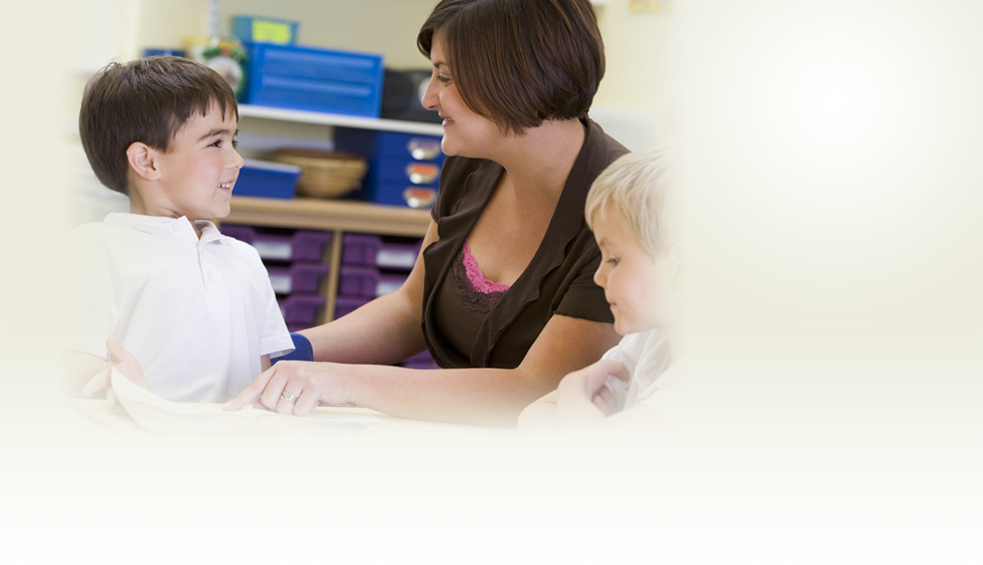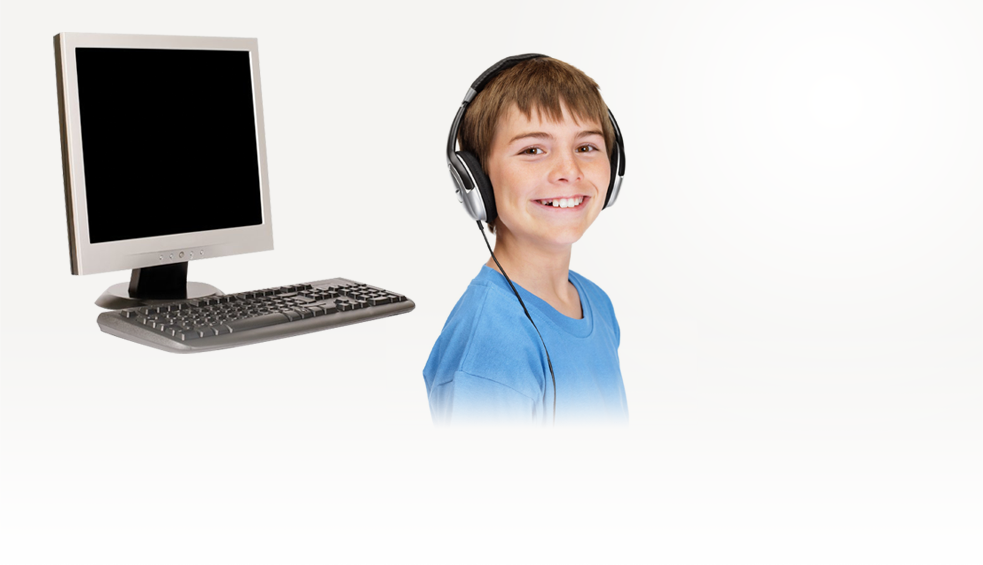What is a Speech-Language Pathologist?
Speech-Language Pathologists diagnose and provide treatment for children and adults with a variety of speech-language, cognitive, voice, social, and swallowing problems.
What kinds of speech and language disorders affect children?
Speech and language disorders can affect the way people talk, understand, analyze or process information. Speech disorders include the clarity, voice quality, and fluency of a spoken words. Language disorders include the ability to hold meaningful conversations, understand others, problem solve, read and comprehend, and express thoughts through spoken or written words.
At what age should I seek out help for my child?
Our Speech-Language Pathologists work with individuals of all ages, from infancy to adulthood. If you are concerned about a family member's communication skills, please call to find out if they should be seen for a communication evaluation and/or consultation. Early intervention is very important. At CCSH, we advocate for early intervention services.
Is my child developing speech and language at a normal rate?
There are differences in the age at which an individual child understands or uses specific language skills. The following list provides information about general speech and language development. If your child is not doing the skills in a particular age range, your child may have delayed hearing, speech, and language development. (Compiled from www.asha.org, "How Does Your Child Hear and Talk?")
Birth - 3 Months:
- Startles to loud sounds.
- Quiets or smiles when spoken to.
- Seems to recognize your voice and quiets if crying.
- Increases or decreases sucking behavior in response to sound.
- Makes pleasure sounds (cooing, gooing)
- Cries differently for different needs.
- Smiles when sees you.
4 - 6 Months
- Moves eyes in direction of sounds.
- Responds to changes in tone of your voice.
- Notices toys that make sounds
- Pays attention to music.
- Babbling sounds more speech-like with many different sounds, including, p, b, and m.
- Vocalizes excitement and displeasure.
- Makes gurgling sounds when left alone and when playing with you.
7 Months - 12 Months
- Enjoys games like peek-a-boo and pat-a-cake.
- Turns and looks in direction of sounds.
- Listens when spoken to.
- Recognizes words for common items like "cup", "shoe," "juice."
- Begins to responds to requests ("Come here," "Want more?").
- Babbling has both long and short groups of sounds such as "tataupup bibibibibi."
- Uses speech or non-crying sounds to get and keep attention.
- Imitates different speech sounds.
- Has 1 or 2 words.
12 Months
- Responds to their name
- Understands simple directions with gestures
- Uses a variety of sounds
- Plays social games like peek a boo
15 Months
- Uses a variety of sounds and gestures to communicate
- Uses some simple words to communicate
- Plays with different toys
- Understands simple directions
18 Months
- Understands several body parts
- Attempts to imitate words you say
- Uses at least 10 - 20 words
- Uses pretend play
24 Months
- Uses at least 50 words
- Recognizes pictures in books and listens to simple stories
- Begins to combine two words
- Uses many different sounds at the beginning of words.
2 to 3 Years
- Speech is understood by familiar listeners most of the time.
- Understands differences in meaning (go-stop, in-on, big-little, up-down)
- Follows two requests ("Get the book and put it on the table.")
- Combines three or more words into sentences
- Understands simple questions
- Recognizes at least two colors
- Understands descriptive concepts
3 to 4 Years
- Uses sentences with 4 or more words.
- Talks about activities at school or at friends' homes.
- People outside family usually understand child's speech.
- Identifies colors
- Compares objects
- Answers questions logically
- Tells how objects are used
4 to 5 Years
- Answers simple questions about a story
- Voice sounds clear
- Tells stories that stay on topic.
- Communicates with other children and adults.
- Says most sounds correctly
- Can define some words
- Uses prepositions
- Answers why questions
- Understands more complex directions
What is a receptive language disorder?
Receptive language includes the skills involved in understanding language. Receptive language disorders are difficulties in the ability to attend to, process, comprehend, and/or retain spoken language.
What is an expressive language disorder?
Expressive language includes the skills involved in communicating one's thoughts and feelings to others. An expressive language disorder concerns difficultly with verbal expression.
What is a Social Pragmatic Language Disorder?
Children with social pragmatic difficulties demonstrate deficits in social cognitive functioning. Diagnostic terms include: Hyperlexia, High Functioning Autism, Semantic-Pragmatic Disorder, Pervasive Developmental Disorders-Not Otherwise Specified and Non-Verbal Learning Disabilities. Some signs and symptoms may include:
- Difficulties with personal problem solving
- Literal/concrete understanding of language.
- Difficulty engaging in conversational exchange.
- Difficulty with active listening, including participating through observation of the context and making logical connections.
- Aggressive language.
- Decreased interest in other children.
- Difficulty with abstract and inferential language.
- Lack of eye contact.
- Difficulty interpreting nonverbal language.
- Difficulty with adequately expressing feelings.
Is my child's "stuttering" normal?
Non-fluent speech is typical between the ages of two and six years. It is typical for non-fluent speech to last up to six months, improve then return. A speech-language evaluation may be in order if your child exhibits any other speech and language difficulties or was a late talker. Any child who is demonstrating any "struggle behaviors" (e.g., facial/bodily tension, breathing disruptions, blocks, grimacing) should be referred to a speech-language pathologist immediately. There are some things you can do at home to help your child's disfluencies:
- Slow down your own speech to a slow normal rate; slow down own actions and adopt a more relaxed, non-hurried atmosphere for your child. Build in more time for getting ready for activities and changing activities.
- Make sure your child has adequate rest and is healthy. Attend to allergies.
- Chart your child's "stuttering to see if a pattern can be determined. Videotape or audiotape your child once a month to obtain an objective assessment of disfluencies.
- Encourage conversation on a "good day". On a day when your child shows many disfluencies, ask more "yes/no" questions which require shorter answers and direct your child to "quiet" activities if your child prefers not to talk.
- Listen patiently to your child and encourage other family members to refrain from interrupting.
- Do what works to encourage fluent speech. Don't be afraid of the stuttering. Your attitude will be conveyed to your child. Fluent speech is like any other sill to be learned and can be encouraged. Contrary to popular belief, many things parents say naturally (e.g., slow down, start again) help their children. Sensitivity and patience is the best approach.
- Come in for a consultation if you are very worried or upset.
What is an articulation disorder?
Articulation is the production of speech sounds. An articulation disorder is when a child does not make speech sounds correctly due to incorrect placement or movement of the lips, tongue, velum, and/or pharynx. It is important to recognize that there are differences in the age at which children produce specific speech sounds in all words and phrases. Mastering specific speech sounds may take place over several years.
What is a phonological disorder?
Phonology refers to the speech sound system of language. A phonological disorder is when a child is not using speech sound patterns appropriately. A child whose sound structures are different from the speech typical for their stage of development, or who produce unusual simplifications of sound combinations may be demonstrating a phonological disorder.
What are some signs of an articulation/phonological disorder in my child?
Signs of a possible articulation/phonological disorder in a preschool child may include:
- Drooling, feeding concerns
- Omits medial and final sounds
- Is difficult to understand
- Stops many consonants, little use of continuing consonants such as /w, s, n, f/
- Limited variety of speech sounds
- Omits initial consonants
- Asymmetrical tongue or jaw movement
- Tongue between teeth for many sounds
- Signs of an articulation/phonological disorder in a school age child may include:
- Omissions/substitutions of speech sounds
- Difficulty with consonant blends
- Frontal and/or lateral lisps
- Difficulty producing consonant /s, r, l, th/.
How can I help improve my child's pronunciation at home?
- Speak clearly and at a slow conversational rate.
- Know which sounds are expected to be pronounced correctly at your child's age - encourage only the speech sounds which are appropriate.
- Model correct pronunciation at natural times during the day. Do not correct your child. For example, if your child says, " I got a pish", you could say, "Yes, you have a fish". You may want to emphasize the target sound slightly.
- Play sounds games if your child is interested. This will increase his overall awareness and discrimination of sounds. You might play with magnetic letters, read rhyming books such as Dr. Seuss, say nursery rhymes or sing songs slowly. Many songs can encourage awareness of sounds through their words (Old MacDonald, Bingo, etc.)
- Tell your child when you don't understand what she has said. Let her know that you will listen and try to understand. Have her gesture or show you what she is talking about if needed. Explain to her that sometimes you may not understand what she says and that you know this must be frustrating for her. Let her know you understand how she feels.
What happens during Evaluations?
Prior to the evaluation, a family member or the individual completes a case history form regarding their concerns and important medical, developmental, and educational history. Our office manager will gather any insurance or payment information as well. We may request additional medical or educational professional information who have evaluated the individual.
During the evaluation , the medical, developmental, and educational history is carefully reviewed. This information helps the Speech-Language Pathologist identify areas to evaluate more closely. A variety of methods, including formal and informal tests, observation, parent/caregiver interview, and play-based activities will be used to evaluate speech, language, cognition, and voice. Selection of testing methods is based on individual needs.
Following the evaluation, Initial results of the evaluation and recommendations are reviewed with you (and your child if age appropriate). A written report detailing evaluation results will be generated and sent to your home and to your physician (if requested). The speech therapist will make specific recommendations based on testing results. If therapy is recommended, our office manager will offer available therapy times to fit your schedule.




